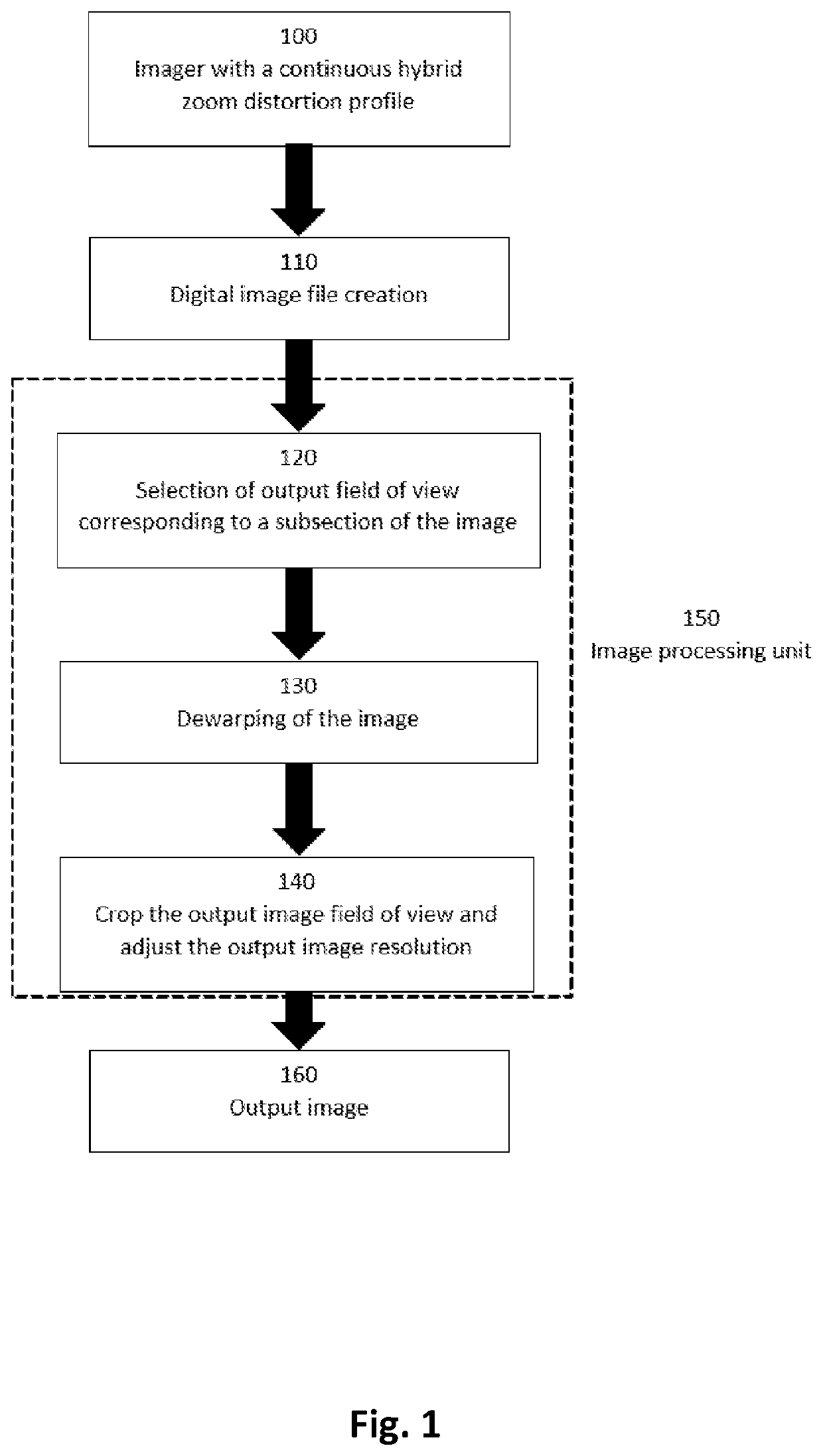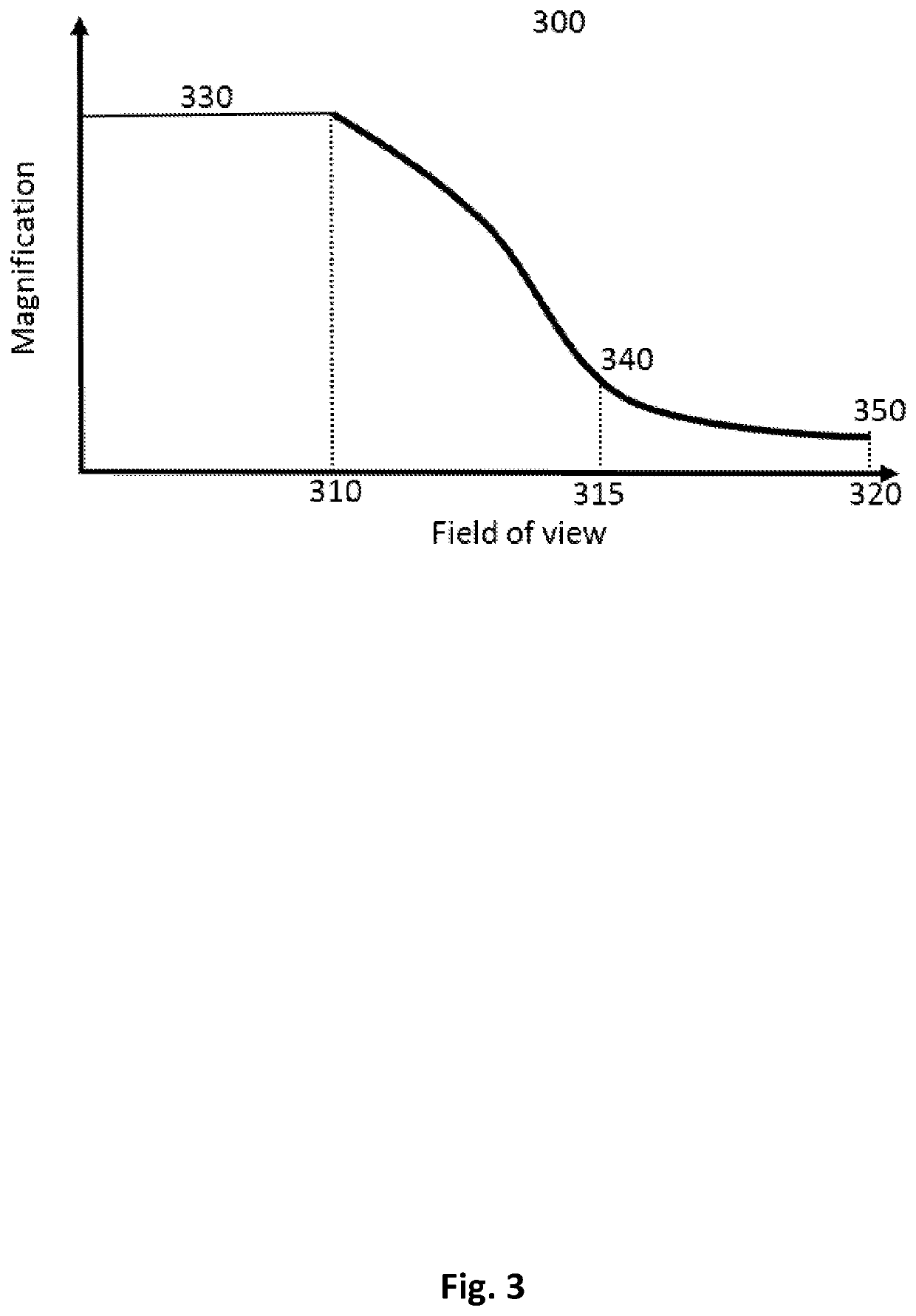Constant resolution continuous hybrid zoom system
a hybrid zoom and constant resolution technology, applied in the field of optoelectronic equipment, can solve the problems of increased size and complexity, increased cost, power consumption, weight limitation and image artifacts, etc., and achieve the effect of reducing the cost of optical zoom, and increasing the size and complexity
- Summary
- Abstract
- Description
- Claims
- Application Information
AI Technical Summary
Benefits of technology
Problems solved by technology
Method used
Image
Examples
Embodiment Construction
[0022]The words “a” and “an”, as used in the claims and in the corresponding portions of the specification, mean “at least one.”
[0023]FIG. 1 shows a flow chart explaining the whole process for the continuous hybrid zoom system according to the present invention. The first step 100 is to use an imager having an imaging system with a distortion profile, as will be explained with reference to FIG. 3, and an image sensor. The imaging system generally includes a classical imaging lens with refractive elements either in plastic or in glass, but could also include other optical elements such as, but not limited to, diffractive elements, mirror, filters or the like. This imager 100 is used to capture a scene by converting the optical image from the imaging system to a digital image file at step 110 using its image sensor. The image sensor includes multiple image sensor pixels and can be of any type, such as, but not limited to, CCD, CMOS, NMOS or the like. The digital image file has a digit...
PUM
 Login to View More
Login to View More Abstract
Description
Claims
Application Information
 Login to View More
Login to View More - R&D
- Intellectual Property
- Life Sciences
- Materials
- Tech Scout
- Unparalleled Data Quality
- Higher Quality Content
- 60% Fewer Hallucinations
Browse by: Latest US Patents, China's latest patents, Technical Efficacy Thesaurus, Application Domain, Technology Topic, Popular Technical Reports.
© 2025 PatSnap. All rights reserved.Legal|Privacy policy|Modern Slavery Act Transparency Statement|Sitemap|About US| Contact US: help@patsnap.com



